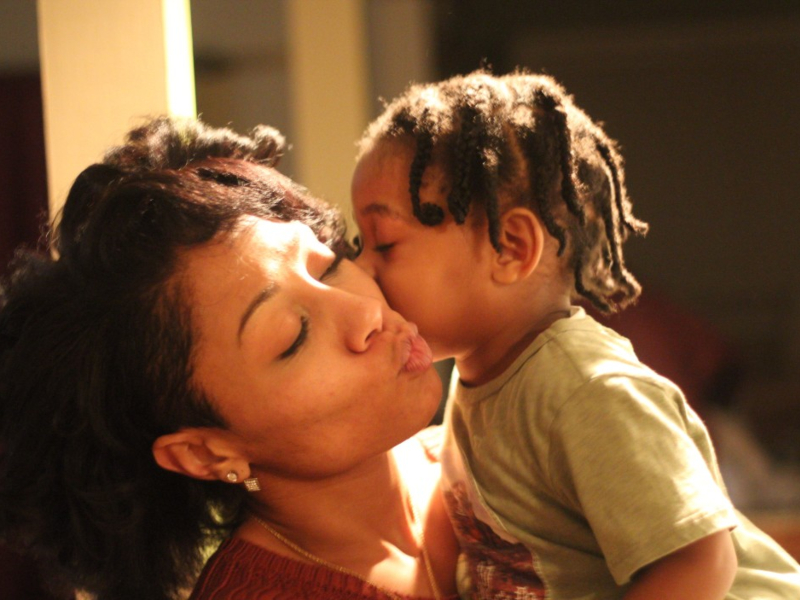
The teen has only one equal when it comes to talking back — the 3-year-old. Lucky me, I have both taking up residence in my home. Both the teenager and the threenager are on a quest to find their voice and their place in life. While looking for that voice, they tend to use it on us parents in less-than-delightful ways. Over the years, I’ve learned to navigate this major discipline issue. Whatever we do, as parents, we absolutely have to handle it effectively when kids talk back. Our kids can learn how to express their needs, wants, and opinions constructively, and we can breathe easier knowing that we got this.
Here are five ways to respond to your children when they talk back.
1. Cool Yourself Down First

When children act out, we naturally move straight to emotion — whether it’s embarrassment, anger, or hurt and disappointment. If you respond with emotion to every sour word that comes out of your child’s mouth, you’re only showing your kid just how to get a rise out of you and get some attention, albeit negative attention. Before you respond to the bad words, remove your personal feelings from the situation. Avoid escalating the situation, take a deep breath, and show true control by controlling yourself first. Then there’s no power struggle to be had.
2. Look Beyond the Delivery

What children are really expressing when they talk back is fear, anger, hurt, or frustration. Talking back guarantees you'll pay attention, and negative attention is better than none at all. Or maybe your little one is exercising some newfound independence and testing boundaries.
Look past the delivery and tone of the backtalk and listen to the words. What is your child asking for? What is being communicated? Maybe your little one is sleepy, and it’s time to leave the event. Pushback over dinner could communicate the need for positive interaction instead of punishment and a power struggle over peas.
3. Set the Expectations

Depending on the age of your child, the way you display or communicate the rules and behavior expectations of the house may vary. A child who is reading can benefit from written and displayed rules. However you decide to communicate the rules, make them accessible. Nonreaders can still utilize charts, such as the stoplight.
Communicate the rules, and make the consequences simple to understand. Green is where the child wants to be. When you move the marker to yellow, it’s fair warning that the consequence is coming. Set the expectations, and be consistent.
4. Pick Your Battles, Then Follow Through

So the preschooler doesn’t want to wear the blue shirt today: “No! I don’t want to wear that! I want to wear this shirt!” Is that a punishable offense or a redirectable offense? Choose wisely. “You can wear the orange shirt today, but that’s not how you ask me. Try again.”
Smaller kids don’t necessarily understand if/then statements. Leave the conditional warnings out of communicating with a backtalking little one. With this age group especially, don’t be afraid to repeat yourself by restating the expectations before issuing the consequence. But don’t forget to issue the consequence. Say, “That’s not a good way to ask so now you’re on red. Here’s the consequence.” Most importantly, say what you mean, and mean what you say.
5. Focus on the Positive

I speak for my own kids when I say they talk a lot. Can you relate? Well, if they say, for example, 100 things in a day, and 70 of them happen to be nice, they’re doing pretty darn good. Naturally, parents give the most attention to the behavior that needs to be corrected, but pointing out positive communication serves a purpose as well. When your kids talk to you the way you want them to talk to you, point it out. Show them that positive behavior warrants a reaction from mom, too.




